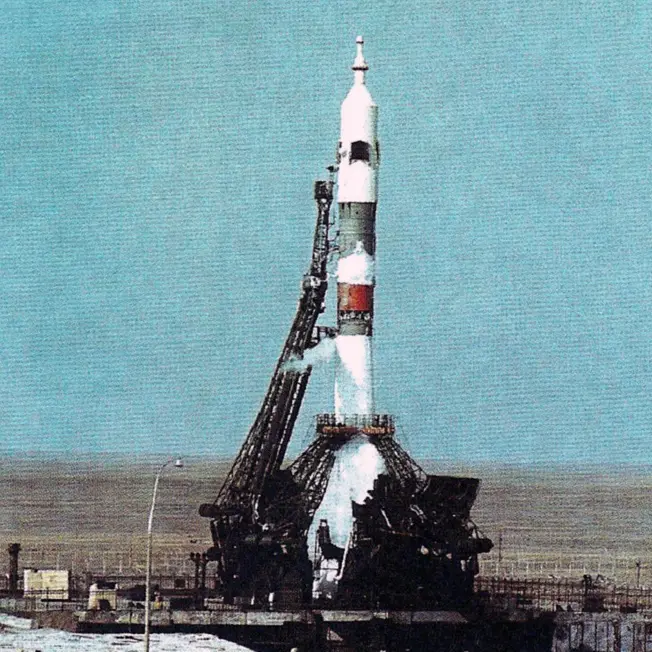Soyuz 9
Launch Success
Liftoff Time (GMT)
19:00:00
Monday June 1, 1970
Mission Details
Launch Notes
Last flight of the first Soyuz 7K-OK version. First crewed flight to be launched at night. To date, Soyuz 9 marks the longest crewed flight by a solo spacecraft. The cosmonauts named the spacecraft Сокол ("Sokol" → "Falcon").
Soyuz 9
Soyuz 9 was a 1970 Soviet crewed space flight. The two-man crew of Andrian Nikolayev and Vitali Sevastyanov broke the five-year-old space endurance record held by Gemini 7, with their nearly 18-day flight. The mission paved the way for the Salyut space station missions, investigating the effects of long-term weightlessness on crew, and evaluating the work that the cosmonauts could do in orbit, individually and as a team. Commander Andriyan Nikolayev and flight engineer Vitaly Sevastyanov spent 18 days in space conducting various physiological and biomedical experiments on themselves, but also investigating the social implications of prolonged spaceflight. The cosmonauts spent time in two-way TV links with their families, played chess with ground control, and voted in a Soviet election. The mission set a new space endurance record and marked a shift in emphasis away from spacefarers merely being able to exist in space for the duration of a long mission to being able to live in space. The mission took an unexpected physical toll on the cosmonauts; in order to conserve attitude control gas during the lengthy stay in orbit, Soyuz 9 was placed in a spin-stabilization mode that made Nikolayev and Sevastyanov dizzy and space sick. When landing finally came, they required help exiting the descent module and were virtually unable to walk for a few days. This is Soyuz's 15th flight, and 8th crewed flight. The Soyuz is a Soviet crewed spaceship, developed to made manned lunar missions. This version called 7K will fly 4 times on the giant launcher N1, and several tens of times on Proton to fly over the Moon, which will be successful during the mission Zond 4. Soyuz will become the first spacecraft to transport living beings to the Moon during the flight of Zond 5, with two turtles. Subsequently, it is adapted to low orbit and will fly on the Soyuz launcher to serve the Salyut and Mir stations and the ISS.
Low Earth Orbit
1 Payload
6,590 kilograms
Launch Site
Stats
Soyuz
17th
Mission
1st
Mission of 1970
OKB-1
486th
Mission
28th
Mission of 1970
1970
44th
Orbital launch attempt

